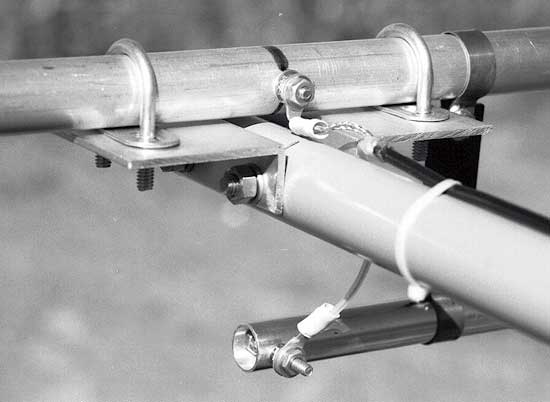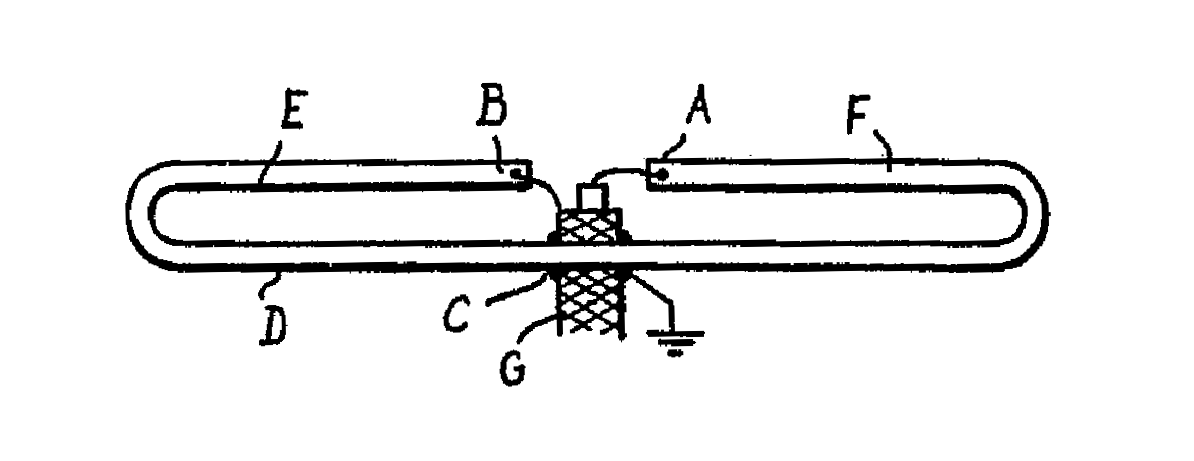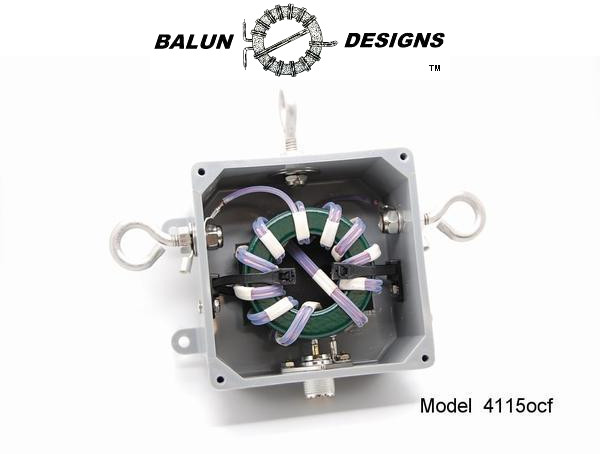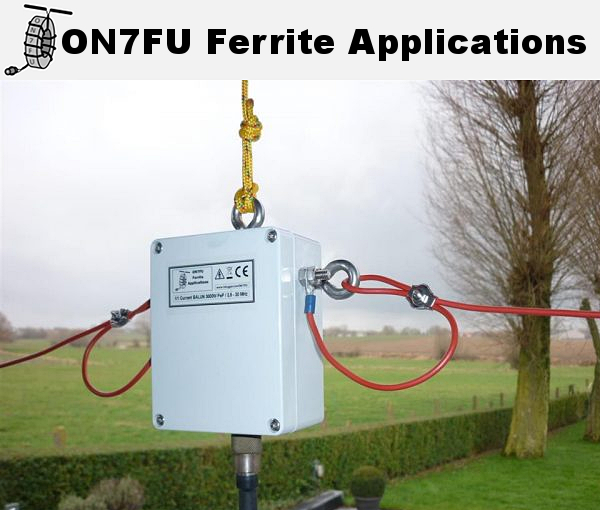Baluns
Serge Stroobandt, ON4AA
Copyright 2007–2018, licensed under Creative Commons BY-NC-SA
- Home
- Antenna Components
- Baluns
An excellent, authoritative text about baluns by Steve E. Hunt, G3TXQ, is a highly recommended read. Steve is the inventor of the broadband hex beam.
Of equal interest is web page of Richard Westerman, DJ0IP, promulgating the distinction between dual-core (preferred) and single-core 4÷1 Guanella baluns.
Introduction
A lot of antenna designs and open wire line require symmetrical or balanced feeding; The voltage potentials and antenna currents need to be symmetrical with respect to the earth potential; i.e. equal in amplitude but opposite in sign (180° out of phase).
On the other hand, coaxial transmission lines are very often employed nowadays. Their biggest advantage is their ability of being routed near conductive objects without experiencing any negative impact on the RF energy that is carried within. The property of having an outer sheath at ground potential is what enables this. Coaxial lines are therefore asymmetrical or unbalanced transmission lines.
It is obvious that a balanced antenna cannot be connected to an unbalanced transmission line without any further. Doing so would severely upset the radiation pattern of any symmetrical antenna. A balun device cures this problem.
Voltage baluns
A voltage balun forces voltage potentials equal in amplitude but opposite in sign with reference to earth, to be present over its output terminals. The basic building block of a voltage balun operates as a conventional transformer, conveying energy over flux linkages. A voltage balun may simultaneously act as an impedance transformer, changing the voltage-to-current ratio of the output with respect to its input.
Current baluns
A current balun forces currents equal in amplitude but opposite in sign (180° out of phase) to flow through its output terminals. The basic building block of a current balun, the Guanella element, operates as a transmission line transformer, transmitting energy by a transverse transmission line mode. Series-parallel combinations of Guanella elements may also simultaneously act as an impedance transformer, changing the voltage-to-current ratio of the output with respect to its input.
| design | impedance ratio | output impedance @ 50 Ω in |
|---|---|---|
| \(\left(\frac{1}{1}\right)^2\) | 1÷1 | 50 Ω |
| \(\left(\frac{5}{4}\right)^2\) | 1.56÷1 | 78.1 Ω |
| \(\left(\frac{4}{3}\right)^2\) | 1.78÷1 | 88.9 Ω |
| \(\left(\frac{3}{2}\right)^2\) | 2.25÷1 | 112.5 Ω |
| \(\left(\frac{5}{3}\right)^2\) | 2.78÷1 | 138.9 Ω |
| \(\left(\frac{2}{1}\right)^2\) | 4÷1 | 200 Ω |
| \(\left(\frac{5}{2}\right)^2\) | 6.25÷1 | 312.5 Ω |
| \(\left(\frac{3}{1}\right)^2\) | 9÷1 | 450 Ω |
| \(\left(\frac{4}{1}\right)^2\) | 16÷1 | 900 Ω |
| \(\left(\frac{5}{1}\right)^2\) | 25÷1 | 1250 Ω |
Most often, an antenna is fed at a low-impedance point or current maximum. If this is the case, current baluns are more effective than voltage baluns in forcing the right currents on the antenna and hence maintaining the desired radiation pattern. This is especially important when nearby metallic objects are suspected of coupling with the antenna.
Moreover, Guanella transmission line transformers offer wider bandwidths, higher efficiencies, higher power handling and better common mode rejection than conventional transformers.1
Ununs
An unun is any kind of transformer which is not designed to convert balanced to unbalanced signals. For this apparent reason, an unun clearly is no substitute for a balun. However, an unun is often combined with a balun for impedance transformation or choking purposes. An impedance transforming autotransformer with a common rail between one input and one output terminal and lacking a center tap to earth may serve as an example.
Power rating
With a normal sine wave signal above 100kHz, ferromagnetic cores will first be affected by overheating caused by core losses, rather than saturation2. Different modes have different duty cycles and therefore different power ratings. RTTY has the highest duty cycle, followed by CW and SSB.
Design impedance
For a transformer or balun to operate efficiently, the windings need to have an inductive reactance of at least five to ten times the design impedance at the input, respectively output. Do not expect a balun to operate at impedance levels well above its specified impedance levels, even though the transformation ratio is suiting you. This is also the reason why a balanced antenna tuner with a balun between the tuner and the transceiver is preferred over an unbalanced antenna tuner with a balun between the balanced transmission line and the tuner.
Bandwidth
A balun has a limited operating bandwidth. The lower limit is determined by the frequency at which the inductive reactance of the windings is at least five to ten times the source, respectively load impedance at the input, respectively output.
The higher frequency limit is first of all limited by the maximum flux density, and hence, power rating that are inversely proportional to the frequency. Transmission line behaviour of the windings further limits the maximum operating frequency.
Manufacturers
The market is flooded with offers of baluns and so-called-baluns, but only few are worth your money. In many announcements it is not specified whether the balun on offer is of the voltage or more desired current type. Neither is it always clear whether the power rating is specified for SSB, CW or RTTY and at what maximum VSWR. Furthermore, a good current balun needs to unite the following qualities:
- mechanical strength,
- provisions for antenna wire strain relief,
- stainless steel antenna wire terminals,
- UV-resistant enclosure,
- excellent insulation, also when wet,
- the insulator furthermore needs to be a low-loss dielectric material (e.g. polycarbonate),
- condensate vent or filled with epoxy resin,
- rain drop gutter around the coaxial connector,
- watertight coaxial connector, preferably a Type-N connector; but definitely not a UHF/PL-259/Type-M connector!
Only a few balun manufacturers unite all of the above requirements in their manufacturing process. If you happen to live in the USA, I highly recommend model 4115ocf of Balun Designs. However, prohibitive import taxes make the ON7FU Ferrite Applications a more valuable choice for EU citizens. These baluns are devotedly hand-assembled by respectively Robert J. Rumsey, KZ5R and Hugo Cnudde, ON7FU. I particularly like models with the N-connector option.
Not always necessary
Surprisingly, the use of a balun is not always necessary when feeding a symmetrical antenna with a coaxial line. When the antenna or symmetrical feed line features a point of symmetry where the voltage potential is at a minimum, the shield of the coax may be connected to this point. This principle is applied in:
- the gamma match (Figure 1),
- the integrated balun of a self-balancing folded dipole3(pp210-211) as depicted in a 1973 British patent4 (see Figure 2),
- the transition to coax at the end of a quarter-wave shorted stub used to feed one or two end-fed dipoles.

Detail of a gamma match: the shield of the coaxial feed line is connected to the center of a driver dipole. Source: Al Alvareztorres, AA1DO5

Self-balancing folded dipole with an integrated balun. Source: GB1322300
References

This work is licensed under a Creative Commons Attribution‑NonCommercial‑ShareAlike 4.0 International License.
Other licensing available on request.

Unless otherwise stated, all originally authored software on this site is licensed under the terms of GNU GPL version 3.
This static web site has no backend database.
Hence, no personal data is collected and GDPR compliance is met.
Moreover, this domain does not set any first party cookies.
All Google ads shown on this web site are, irrespective of your location,
restricted in data processing to meet compliance with the CCPA and GDPR.
However, Google AdSense may set third party cookies for traffic analysis and
use JavaScript to obtain a unique set of browser data.
Your browser can be configured to block third party cookies.
Furthermore, installing an ad blocker like EFF's Privacy Badger
will block the JavaScript of ads.
Google's ad policies can be found here.
transcoded by
 .
.




